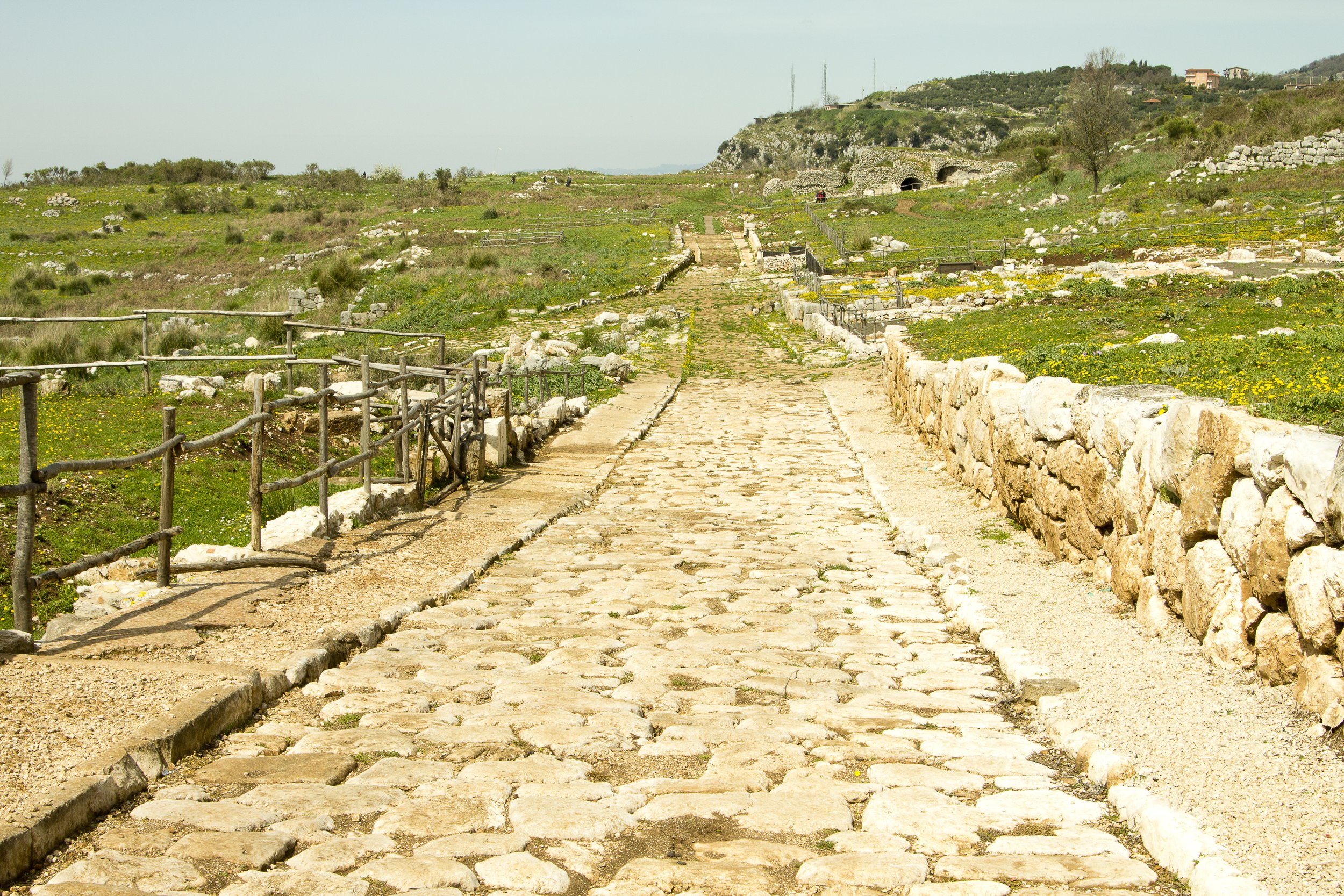Written by: Sara Dennis
Whether you think about the Roman Empire every day, or never at all, you’ve likely seen elements of it in our day-to-day lives. To add onto our “Brief History of Civil Engineering” article, we will dive deeper into some civil engineering aspects of ancient roads, mostly focusing on the famous Roman roads.
Ruins found in modern-day Iraq, showing a wall formed from bricks.
To the best of our knowledge, the first intentional roads (I.e., not just well-worn paths) were laid down in ancient Mesopotamia, in 4000 BCE. To create these roads, people (the Sumerians) would form identical bricks made from mud and leave them out to dry. Once dried, the bricks were set into place with bitumen, which is the sticky black substance in asphalt used in road building today. These bricks were also used by the Sumerians with bitumen as building materials for temples (called ziggurats) and other structures.
Much later, in 300 BCE, the Romans started building their famous roads, throughout the Roman Republic, and subsequent Empire. To create the roads, the Romans had an extensive construction process:
First, they performed a thorough survey of the land, to become familiar with landscape, understand what engineering challenges there would be, and identify what the straightest route possible would be between two points.
Next, they would prepare the route for road construction. This included draining marshes, cutting down or through forests, building bridges to cross rivers, diverting creeks, and creating tunnels through mountains.
After those preparations, road construction would begin. First, they would dig a trench, then lay down a foundation. This foundation could be made of rough gravel, crushed brick, clay, or perhaps wood piles in marshy areas. Then, on top of the foundation they would add a layer of finer gravel to create a more level surface. Last, they would surface the road with blocks or slabs of stone. Once the roads were built, they were leveled and reinforced with support walls or terracing.
Finally, the Romans understood the importance of maintenance. Much like today's roads, to keep things running smoothly, they required routine maintenance and repairs for everyday wear and tear.
Pompeii ruins (near the modern-day Naples) showing an ancient Roman road.
The Roman Senate classified different types of roads as the following:
Major (or Main) Roads: public roads funded through public money, AKA taxes. They connected cities, rivers, and bodies of water. Often times they were used by legions (the Roman army), and sometimes by private traffic.
Secondary Roads: private or rural roads used to connect places to the main roads. They were usually funded privately.
Communal Roads: roads connected smaller villages to other roads. They could be privately or publicly funded.
Remains of a Roman street
The major roads were a standard 4.2 meters wide, which was large enough so that two-wheeled vehicles could pass each other on the road. Much like modern roads, they were slightly inclined in the center, which allowed stormwater to run off to the sides of the road, rather than pool in the middle. Many also had drains, as well as gravel pathways on the side for pedestrians and animals, similar to today’s sidewalks. Milestones were placed at regular intervals, many times as literal mile markers. (Note: the Roman mile was standardized as “1000 paces” or 4850 feet [~1480 m], while the British Imperial and US mile is 5280 feet [~1610 m]). These milestones gave information about distances to places, as well as information about the road itself – like who owned it and what repairs had been made to it.
A Via Appia Antica road sign
The first major Roman road, the Via Appia (the Appian Way in English), is known as the world’s oldest surviving road. Surviving chunks of the road can still be seen near Rome today. The Via Appia stretched over 300 miles and was built in 312 BCE to link Rome with some of its distant settlements, including the city of Capua. It served as an important thoroughfare for both the military and for traders, helping bolster Rome’s economy.
After the Via Appia, many more similar roads were constructed, including the Via Aurelia, connecting Rome to modern-day France, the Via Cassia, connecting Rome to Tuscany, the Via Flaminia, connecting Rome to Rimini, the Via Salaria, connecting Rome to the Adriatic Sea, and more. At the Roman Empire’s peak, there were at least 29 major roads radiating from Rome, thus inspiring the expression “all roads lead to Rome”. Furthermore, there were approximately 372 roads connecting the Empire’s 113 provinces.
Eventually the Roman network of roads, tunnels and viaducts covered approximately 74,565 miles (120,000 km), connecting the western and eastern empire, spanning from Western Europe - like Britain and Portugal, to parts of the Middle East - such as Constantinople (modern day Istanbul) and Syria. While some Roman roads, like the Via Appia, can still literally be seen today, we can also see the impact of these Roman roads in our history, and on modern roads today.
Roads throughout the Roman Empire in 125 AD, by DS28, CC BY-SA 4.0, via Wikimedia Commons
Sources:
1. Cartwright, Mark. “Roman Roads.” World History Encyclopedia, World History Encyclopedia, 17 Sept. 2014.
2. Longfellow, Rickie. “Building Roads.” Highways.dot.gov, Federal Highway Administration, 30 June 2023.
3. Mussio, Gina. “The Appian Way Uncovering One of the Best Attractions in Rome.” Walks of Italy, Walks of Italy, 20 Sept. 2023.
4. Songer, Tristan, et al. “An Ancient Network – The Roads of Rome.”




